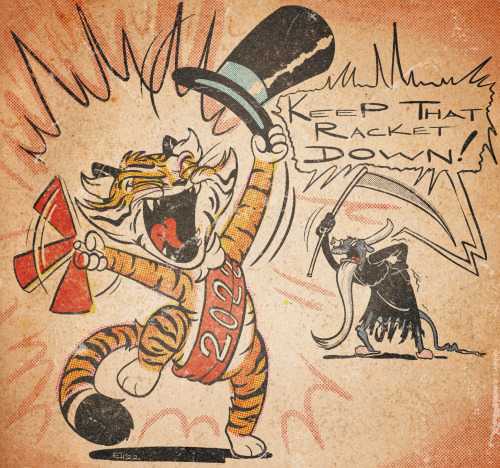#father time
I’ve watched “Star VS The Forces of Evil” episodes 15-16 season 4. In the first part of the first episode Star and Marco are getting ready for their trip and saying goodbye to everybody and when everything seems ready, she still comes up with excuses to delay their departure. (Spoilers!) Tom asks her, what’s wrong she can’t tell, but says that she doesn’t want to go. Tom blows up (a little, not like he used to, and he has a reason) and flees and Star goes to Earth and meets Marco (who came home too) and his little sister Mariposa. The second part is about how Star has some thaws, realizes that it’s summer on Earth and she doesn’t have to do anything. She and Marco go to get tacos and meet Jackie there. Marco is nervous and thinks that he was a bad boyfriend, but she assures him that he was and still is a very good friend and she also got a French girlfriend. The first part of the second episode is about the Beach day and yes, again about this photo from the future. Star and Marco have a beach day, finally, make the photo, but Star isn’t happy and goes to ask Father Time about it. It turns out that he didn’t give her this picture, she from the future did (or will do, time paradoxes) and she decides to live it as it is and just have fun with Marco on the beach. The last part is very cool: Marco babysits both Mariposa and Meteora, Hecapoo comes to warn him to stay out of Mewni and accidentally leaves her portal open and both babies go there – to the Neverzone. Star and Marco go to find them and they do find – two amazing and fierce teenage girls, one of whom can use magic and the other is a very good fighter. They don’t want to go with some weird strangers, instead of it they knock them off and try to sell Star as a magic-user to some magical creature in exchange for magic powers for Mariposa. Firstly, this magical creature – Wyscan – is just a fabulous blue-skinned elf with long white hair who can fly and always stands on his toes, secondly, he was going to eat Star with a huge mouth he had on his stomach and Mariposa (with Marco’s persuasion) decides that it’s no good and they fight him and can run away. The funny thing is that Star and Marco were able to make girls go with them after telling them that they have different tasty food in their world (unlike the Hecapoo’s dimension, where they had to eat garlic spiders).

















Astrology functions as an assessment of temporal quality, but is the archetype of time ruled by any particular sign?
Preface
The wheel of the zodiac is often depicted with Aries on the left, thus keeping it in line with the houses: that is, Aries corresponds to the ascendant and first house, Taurus occupies the second house, and so on.
However, there are some interesting patterns that emerge under other rotations. Rotating the wheel one sign counter clockwise, so that the first house is held by Taurus, we find Cancer and Leo on either side of the nadir, the lowest point of the wheel. This emphasizes the wonderful symmetry between each pair of signs that share rulers:

The exception being, of course, the Sun and Moon which rule one sign each. This might point to a secret identification between these forces, which are typically conceptualized as the most fundamental opposites: consciousness and the unconscious, light and dark, etc. The arcane marriage of these principles is a motif which humanity has been pondering since antiquity. Positioning this syzygy at the bottom of the wheel gives the impression that the other signs spring forth from this coupling as a series of portraits from one luminary to the other; as call and response music, or dance steps. One can say that the entire zodiac functions as a mythological alphabet that elaborates of the riddle of the Sun and Moon.
Time
Under this cosmic lens, let’s examine a feature essential to our experience of the universe: time. Where does time show up in the zodiac? Can any particular sign be said to govern this concept? At the very least, we can draw the strongest general associations between time and these signs:

If you ask astrologers which sign most corresponds to the concept of time, Gemini would be a common and reasonable answer. It is the traditional ruler of clocks and measurements of time, and is said to rule the time-dependent concepts of transit and commuting.
Capricorn is another traditional response, since it rules the schedule, the time table, the restriction of time, the inexorable march of time. Father Time, the bearded old man with the scythe and the hourglass, is one of the most well known personifications of Saturn.
Aquarius is a bit more esoteric in this regard, but perfectly valid. Aquarius is most associated with the concepts of the instant, the moment … suddenness! Moreover, it is the traditional ruler of kairos, the ancient Greek idea of “pregnant time.” From Wikipedia:
The ancient Greeks had two words for time: chronos (χρόνος) and kairos. The former refers to chronological or sequential time, while the latter signifies a proper or opportune time for action. While chronos is quantitative, kairos has a qualitative, permanent nature.
Chronos is a clear attribute of Capricorn, therefore these two notions of time are represented by the two Saturn-ruled signs. These two signs are farthest from our supposed origin-nadir, the Cancer/Leo threshold. Capricorn is opposite Cancer, and Aquarius is opposite Leo. This suits the mythological conception of Saturn as the demiurge, the architect of mundane incarnation, the mechanic of the machinery of the cosmos.
To complete this symmetry, we would hope that Virgo is also associated with time. That way, Saturn-ruled signs can roost up at the dome of time, representing its furthest limits, while Mercury ruled signs can reflect each other as attendants to the atemporal solar/lunar archetypes, initiating those forces into the game of time. Gemini does this job perfectly for the Moon, showing how time is “reflected” in the mind through the image of the clock.
So, is Virgo then one of our rulers of time? Ever humble and self-diminishing, Virgo does not jump out as readily as the others, but it does indeed complete a very crucial and unglamorous role. Any astrologer will tell you that Virgo rules punctuality. That is, the adherence to time. If Gemini is the clock at the train station, and Capricorn is the schedule, and Aquarius is the fortune of sliding through the closing door, then Virgo is the plain fact of showing up on time.
So it is clear that there are affinities between rulerships. The two mercury-ruled signs rule basic, mundane relationships to time: time measurement and time observance. The two Saturn-ruled signs rule the extremes of time: time’s bondage and time’s potentiation. There are also affinities between elements, which we explore later. But there are also delightful parallels between the pairs of signs which share no essential qualities. Consider that Gemini and Capricorn both rule structural, objective attributes of time, summarized by the clock and the schedule respectively. The other pair rules more subjective qualities of time: Virgo corresponds to the season, and Aquarius to the zeitgeist.
Elemental Purports
What does it mean that all four of these time-governing signs are earth or air? At the most obvious level, we should note that in the cultural imagination water and fire are characterized by motion, while earth and air are not. Air is about potentiation; it is the closest element to pure yang. It is the breath, which corresponds esoterically to the pneuma, the coherence of spirit which vivifies matter. It is atmosphere: that which surrounds every atom, and every germ of life, from the smallest bud to the egg of the cosmos. In a sense, pure potentiation means being eternally unborn. It is actually full activity—boundless perpetual motion—or “unlimited wind” in the Vedas—the inexhaustible first word of creation which has no duration, and obviously no equivalent upon the time-dependent material plane.
That plane is brought to us in part by earth, the closest element to pure yin. It is easy to understand how “pure passivity” is not comprehensible within time—easier than the concept of “pure activity” which we looked at previously. There is only ever the appearance of stillness in our perception; never an object which is actually fully static. The signature “movements” of matter may be entropy and decay.
We should also understand the conventional elemental associations with the astrological attitudes: cardinality is “like” fire; fixidity like earth; mutability like air. Therefore these time signs are:
- The airy part of air (Gemini)
- The airy part of earth (Virgo)
- The fiery part of earth (Capricorn)
- The earthy part of air (Aquarius)
So earth is implicated in three of these, and air is implicated in three of these. The only exception to air is the fiery part of earth; earth in its cardinal aspect. This means it is the apparent, self-projecting aspect of earth; earth with its essence on display. Capricorn governs, if you’ll remember, the bondage aspect of time, and the sign that is the most common answer to the naive question of time rulership.
The only exception to earth is the airy part of air: Gemini. This is notably the second-most common response to the question of time rulership. And, as we have seen, together Gemini and Capricorn account for the objective qualities of time. Here’s a weird one: if Gemini and Capricorn are the most obvious rulers of time, perhaps that is partially due to the subjective quality of our time, which is so concerned with, and aware of, objective qualities!
Or maybe it is the fact that the subjective qualities of time are defined by contradiction, and thus more difficult to understand in any age. After all, what is the “earthy part of air” and “the airy part of earth”? There does seem to be an especially elusive mystery about Aquarius: the concept of kairos, but also of the wish, and of heaven. What are we to make of the fact that Aquarius is “familiar to the alien”? Or the fact that it is associated both with the moment and with “timelessness”? We have seen air as pure potentiation, necessitating boundless movement; how could there be a “fixed” expression of such a principle?
In contradiction to the most “alien” sign, Virgo is typically tagged as the most mundane sign. The relative anonymity of Virgo is also contrasted with the radical idiosyncrasy of Aquarius. And its tradition-mindedness would appear also to chafe against Aquarian novelty. Yet let us remember what these signs share: they given definition to the subjective attributes of time. We mentioned that Aquarius holds both the uniqueness of the moment, and the unchanging eternal, but Virgo holds this mystery too. Virgo’s anonymity comes from a deep, intuitive understand that we are all the same. That is why the goddess and the virgin go by so many names. In fact, they necessitate that many names, because the multiplicity of the expression is part of the expression. Virgo is the scattering of the atoms; matter in full possible diffusion. The secondary ruler of Virgo, besides mercury, is not one planet but an abundance of asteroids. Virgo knows both “I am a link in a chain” and also “I am this link.” What is punctuality but specificity? What is a unit of matter but a detail? Virgo knows both, “This season has come before,” and also, “This summer is this summer.”
Summary
The wind of Gemini is the wind that blows in the quality of time, existing in some unknowable potentiation beyond this world. Capricorn is the slow-burn of matter upon which quality plays, and is thereby bound. Virgo rotates the wheel, perpetuating the cycle through its incremental movement. The rotations are then recognized by their quality of motion. Aquarius imagines the wheel stopped, glimpsed in gestalt, and the wheel is recognized by the quality of its stillness. Cumulatively, these four archetypes collaborate to describe the terms of the dance through which psyche extends itself into its many other guises.

Mother Nature Father Time and Baby New Year

Chapter 7- Blood Pact
Desperate times call for desperate deals.
Collaborated with @onelastfic!
Nenet Long belongs to @onelastfic!

